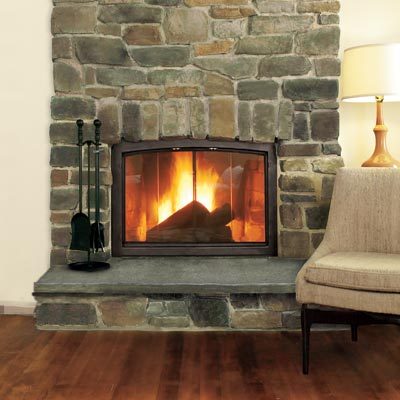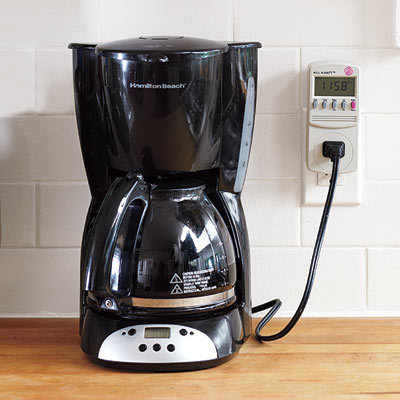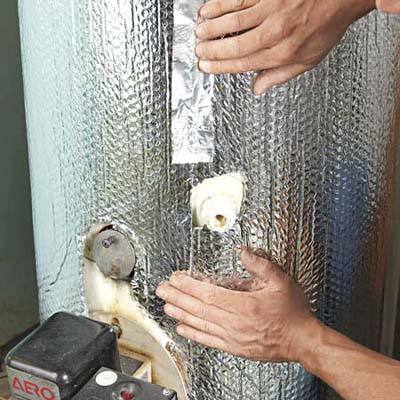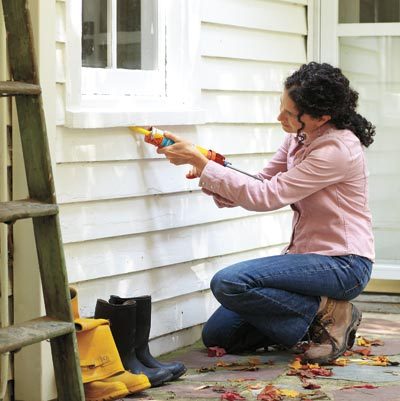So you've swapped your incandescent lightbulbs for CFLs, turned down the thermostat, and only wash clothes on cold. Then why are your utility bills still so high? Air leaks are likely culprits, but so are "phantom" power suckers, such as flat-screen TVs, which draw energy even when they're off.
To help pinpoint exactly where you are burning through resources—and cash—we polled energy consultants across the country. The simplest route, they agree, is to have a professional auditor detect leaks with sophisticated tools, such as blower doors and infrared cameras. Your local utility may offer this service for free. But if pro audits near you come with hefty price tags, you can do some easy tests yourself and put your money toward addressing the problems. "With a little knowledge and determination, you might be surprised by your next power bill," says Jeffrey Gordon, spokesperson for the New York State Energy Research Development Authority.
The problem: Outside air comes in and warmed air escapes through leaky frames, accounting for 10 to 25 percent of your heating costs.
How to spot it: On a blustery day, close all windows and exterior doors and the chimney-flue damper. Light a stick of incense, move it around the perimeter of each window, and watch for air that interrupts the delicate rise of smoke.
How to stop it: First check the window from the outside, paying close attention to where its casing meets your home's siding. "This is an area that often doesn't get the kind of attention it needs," says Ted Kidd, an energy consultant in Rochester, New York. Scrape out any cracked or dried caulk, and apply a fresh bead of paintable acrylic latex, such as DAP's Alex Plus. On the inside, add new weatherstripping. For a few hours' work, you can make an old wood double-hung airtight using a kit like the Easy-Stop Weather-Stripping System (advancedrepair.com). The kit contains a silicone flap for the bottom rail of the lower sash and a pile strip for its top meeting rail. Also included are new paintable cellular PVC parting beads (narrow bands that separate the upper and lower sashes) with built-in insulation.
The payoff: Shave up to $20 off your annual energy bill for each window you weatherize.
The problem: Most bills don't break down energy consumption by category, such as heating, cooking, and lighting, making it almost impossible to target where you are overspending.
How to spot it: Sign up for one of the dozens of new pilot programs offered by regional utility companies to help homeowners pinpoint and control their usage with a digital energy-management system.
How to stop it: Hook major appliances and electronics up to smart plugs, or relays, which transfer information to a Wi-Fi-enabled control panel that sits at a central location in your home, such as the kitchen counter. This device—it can also switch appliances on or off and adjust a programmable thermostat from home or remotely via a computer or smartphone—gives you a real-time look at how much energy you're using in kilowatt hours and dollars. "You can determine immediately what's costing you the most money and decide if it's worth keeping that item plugged in," says Paige Layne of Duke Energy, which is currently supplying customers with Cisco's Home Energy Controller (shown) free of charge in select markets in the South and Midwest. If your utility isn't offering such trials, you can buy a monitoring kit at an electronics store, such as Best Buy.
The payoff: Save 10 to 25 percent on your electric bill by tracking down unwanted energy hogs and using the consumption data to change your habits.
3. Check Your Fireplace Damper

The problem: Ten to 20 percent of warmed air from your home can be drawn into the chimney flue, passing around a rusted, stuck, or loose-fitting damper.
How to spot it: With the damper closed, hold a lit candle inside the firebox and watch the flame. If it gets beaten around or blown out, air is flowing up the chimney.
How to stop it: Hire a chimney sweep. In addition to giving the chimney a good cleaning, lubricating and checking the damper is usually part of the $90 to $200 service call. In the off-season, when the fireplace isn't in use, you can seal the flue completely with a balloonlike plug, such as the Fireplace Draftstopper ($55; batticdoor.com), that you inflate and insert up the chimney just in front of the damper. When cold weather starts again, simply deflate the plug for easy removal.
The payoff: Reduce your annual heating bill by up to $500.
4. Audit Appliances and Electronics
The problem: Devices with a so-called standby mode that sap power even when they aren't in use can account for 10 percent of your electricity costs.
How to spot it: If it has an indicator light, a charger or AC power adapter on the cord, or a digital clock, it's a phantom. When in doubt, plug the device into a Kill A Watt detector (shown below, $22; amazon.com), which measures exactly how much power is being drawn from the outlet when the device is supposedly "off."
How to stop it: Put phone chargers, the flat-screen TV, and computer and stereo equipment on power strips. "That way you can easily flip a switch and cut power directly from the outlet before going to bed," says energy consultant John Meeks of AppleBlossom Energy in Concord, North Carolina. Plug devices that are best left on 24/7 directly into dedicated surge protectors, he says; your DVR, for instance, needs power to record programs when you aren't around to watch them. And if you get phone service through the Internet, you'll want to keep your router juiced, too.
The payoff: Save $55 a year just by cutting standby power to your DVD-VCR player, stereo tuner and CD player, and video-game console.
TOH Tip: To cut your dishwasher's energy usage in half, pull out the racks after the final rinse cycle and let your dishes air-dry.
5. Give Your Old Water Heater a Blanket
The problem: Heaters that are more than 10 years old tend to be lined with fiberglass insulation, which is less effective at preventing heat loss than the foam used today.
How to spot it: Check the heater's date of manufacture printed on a sticker or metal plate on the side of the tank. Next, touch the tank. If you feel warmth, it's lacking insulation.
How to stop it: Wrap the tank in a precut blanket with an insulating value of at least R-8. Some utilities offer rebates on the $10 to $20 jackets and will even install one for free. To further boost efficiency, fit foam sleeves or insulating tape around pipes. "If your hot-water lines are exposed, that's a lot of energy lost as water travels through them," says Logan Brown of Efficiency Vermont, a nonprofit energy advisory agency. Covering cold lines keeps condensation from beading up on the pipes, helping to prevent mold and mildew in your basement, says Brown.
The payoff: An insulating blanket alone can reduce annual water heating costs by up to 9 percent.
See 7 more utility bill slashers at thisoldhouse.com and you'll be on your way to a stack of extra cash!
- Check out our Step-by-Step, How to Do Fall Furnace Maintenance to make sure you don't get caught in the cold this winter
- Like us on Facebook for seasonal stories and DIY tips right in your news feed!
- Check out This Old Apartment on Tumblr!

